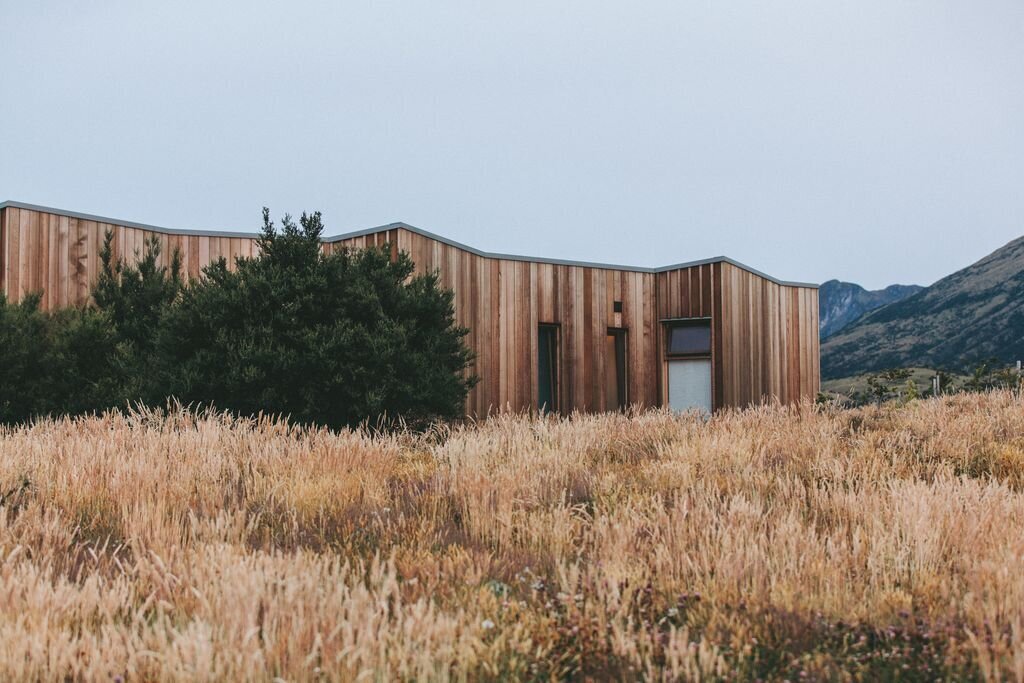Family Quest: Connecting Families with Enriching Local Activities
Overview
Family Quest is a conceptual responsive web application designed as a comprehensive, user-friendly platform for parents and guardians to discover, evaluate, and plan engaging local educational and enriching activities for their families. Addressing the common frustrations of fragmented information and difficult planning, Family Quest aims to foster quality family time, facilitate off-screen learning, promote community exploration, and help create lasting memories, all while prioritizing inclusivity and accessibility.
My Role: Sole UX/UI Designer (Conceptual Project)
Responsibilities: End-to-end UX/UI process including User Research (Simulated, Secondary), Persona Development, Competitive Analysis, Empathy & Journey Mapping, Information Architecture, User Flows, Wireframing (Low & High-Fidelity), Prototyping, Usability Testing (Simulated), UI Design, Accessibility Integration.
Duration: [Estimate timeframe, e.g., June 2025 - August 2025] (Approx. 10-12 weeks, part-time)
Tools: Figma, Pen & Paper.
The Problem
Finding suitable family activities is often a fragmented and frustrating experience. Parents waste valuable time searching across numerous websites, blogs, and social media, struggling with incomplete, unreliable, or outdated information. Critically, finding accurate and easily accessible details about accessibility (physical, sensory, dietary) is exceptionally difficult, excluding families with specific needs. This leads to information overload, poor user experiences (especially on mobile), a high risk of choosing unsuitable activities, and ultimately, wasted time, money, and missed opportunities for quality family engagement.
Core User Pain Points Identified:
Time-Consuming & Fragmented Discovery: No single, trusted source for finding relevant activities.
Incomplete, Unreliable, or Outdated Information: Difficulty evaluating suitability and logistics.
Critical Accessibility Information Gap: Major struggle finding reliable accessibility details.
Poor & Inconsistent User Experience (Especially Mobile): Many resources are clunky or not mobile-friendly.
High Risk of Mismatched Expectations & Wasted Resources: Leading to disappointing outings.
The Goal
The primary goal of our responsive web app, "Family Quest," is to empower parents and guardians to:
Easily discover local educational and enriching activities.
Confidently evaluate potential activities, including critical accessibility details suitable for diverse needs (various ages, abilities, etc.).
Seamlessly plan scheduled outings or spontaneously find suitable activities on the go.
Ultimately, this will reduce the time and frustration spent searching, increase confidence in activity choices, foster more frequent quality family time, promote off-screen learning, and enable the easy creation of lasting memories.
My Role
& Responsibilities
As the sole UX/UI designer, I conducted the entire design lifecycle. This involved defining the product strategy through research and analysis, crafting user personas and journey maps to build empathy, designing the information architecture and user flows, creating wireframes and interactive prototypes (low and high fidelity), planning and simulating usability testing, iterating on designs based on feedback, establishing the visual identity, and ensuring accessibility principles were integrated from the start.
The Approach & Process
A rigorous user-centered design process was employed, emphasizing empathy, iteration, and inclusivity. Key phases followed our defined framework:
Understand & Define: Initial concept, research planning (interviews, secondary), persona development.
Analyze & Strategize: Research synthesis (empathy/journey maps, pain points), competitive analysis, defining problem/hypothesis/value/goal statements, ideation.
Design & Structure: IA (sitemap), user flows, storyboarding, wireframing (mobile-first).
Test & Iterate: Low-fidelity prototyping, usability testing (simulated), design refinement, high-fidelity design & prototyping, further testing (simulated).
Discovery
& Research
Competitive Analysis
Research Planning & Execution
A research plan was developed focusing on understanding current planning behaviors, pain points, decision factors, and accessibility needs. Methods included outlining an interview script and simulating interviews with personas (like Ben, the Weekend Explorer) and synthesizing findings from planned secondary research (competitor analysis, forums, articles).
Competitive Analysis
An audit of direct competitors (Mommy Poppins), analogous platforms (Airbnb Experiences), general platforms (Eventbrite), source providers (Museum websites), and default tools (Google Search) revealed a fragmented landscape.
Opportunities
No single competitor effectively combines hyperlocal educational focus, robust/reliable filtering (especially accessibility), strong UX, and integrated enrichment features. Family Quest aimed to fill this niche.
Understanding User Needs
Based on common parental challenges, core pain points were identified (listed earlier). To further empathize with potential users, three distinct personas were developed representing different needs and technological comfort levels:
Sarah (The Organized Parent): Tech-savvy, needs efficiency and centralized control. Frustrated by fragmented systems and time-consuming tasks.
David (The Stressed Parent): Time-poor, less tech-savvy, needs simplicity and clear reminders. Overwhelmed by complexity and paperwork.
Maria - The Proactive Parent): Wants detailed tracking, reliable info, and control over comprehensive data.)
These personas guided design decisions, ensuring the app catered to a range of user needs and contexts.
Defining the User & Synthesizing Research
User Journey Mapping
To visualize user struggles, I mapped out Sarah's current process for obtaining immunization records. This highlighted multiple pain points like phone calls, waiting times, and potential for lost information, reinforcing the need for a digital solution.
User Stories
Key user stories were developed for each persona to translate needs into actionable design requirements, covering discovery, filtering, evaluation, planning, accessibility, and engagement features. Examples:
As Chandra, I want to filter activities by specific accessibility features (wheelchair access, sensory-friendly options) so that I can quickly find events suitable for my family.
As Ben, I want to quickly see activities happening near me right now or this weekend so that I can find spontaneous things to do with Leo.
As David, I want to heavily rely on average user ratings and read reviews from families with multiple children so that I can gauge the likelihood of both my kids enjoying it.
Analyze & Strategize
Problem Statements
Core user problems were concisely defined:
Discovery & Evaluation: Busy parents need a quick, reliable way to find and evaluate local activities (including accessibility) due to fragmented, untrustworthy current sources leading to frustration.
Planning & Confidence: Planning-focused parents need detailed, accurate information (educational aspects, comprehensive accessibility) for confident advance planning, which is currently difficult.
Meeting Diverse Needs: Families with multiple kids/needs struggle to find activities appealing to everyone due to generic listings and vague reviews, risking wasted resources.
Hypothesis Statements
Testable hypotheses proposed how the features would address problems:
Information & Filtering: Centralized platform with robust filters (inc. accessibility, map-draw search) will reduce search time and improve confidence.
Accessibility Trust: Dedicated, reliable accessibility info/filters will ease discovery for families with specific needs and build loyalty.
Social Proof: Integrated user reviews will enable faster, more confident decision-making.
Mobile Experience: Intuitive mobile-first design will increase task completion for spontaneous searches.
Engagement & Planning: Integrated tools (saving, calendar, journal) will increase retention and perceived value
Value Propositions
Core benefits articulated:
Speed & Ease: Find Your Next Family Adventure, Fast.
Trust & Reliability: Plan with Confidence: Reliable Info & Real Reviews.
Inclusivity & Detail: Accessible Adventures for Every Family.
Engagement: Go Beyond the Event: Enrich & Remember.
Ideation & Design Solutions
Ideation
Brainstormed features aligned with value props, including robust filtering (free, accessibility, map-draw), standardized detail pages, reviews, saving/sharing, journaling, and calendar integration. Prioritized core features for MVP.
Information Architecture
& Sketching
A hierarchical sitemap was designed, optimized for mobile navigation (Tab Bar: Discover, Map, Saved, Journal, Profile), ensuring logical organization and clear pathways for core tasks.
Primary Task & User Flow
Defined the Primary Task: Successfully find and select a suitable local activity that meets the family's immediate criteria and allows confident evaluation based on detailed information (including reviews and critical accessibility details). Mapped the detailed user flow for this task, accommodating multiple discovery paths and emphasizing filtering and evaluation steps.
Storyboard
Visualized David Miller's journey using the app to find an activity suitable for both his kids, highlighting how Family Quest addresses his specific pain points.
Mobile-First Wireframing
Developed low-fidelity wireframes for key screens in the primary task flow and secondary flows (Saved/Planned, Journal), focusing on structure, hierarchy, and mobile usability. Annotations explained functionality and rationale.
Prototyping
& Testing
Low-Fidelity Prototype
& Usability Testing
A clickable low-fi prototype focusing on the primary find-and-select flow was created. A usability test plan was developed targeting diverse personas. Simulated Key Findings:
Positive: Users generally understood the core navigation and flow. The standardized layout of activity details was appreciated.
Issues: Some users struggled initially to locate the detailed "Accessibility" filter options (needed more prominence). The distinction between "Save to Wishlist" and "Add to Plan" (hypothetical buttons) caused confusion. Users requested a "Free" filter shortcut.
Quote: "I really liked seeing the accessibility info clearly laid out, but finding the filter for it took an extra click."
Design Iterations
Based on findings, key changes were made to the wireframes:
Accessibility Filter: Elevated its prominence within the main filter view, potentially using a clear icon. Added a dedicated "Free" toggle/button near the price filter.
Save Functionality: Consolidated "Save" actions to a single clear "Save/Bookmark" icon/button, simplifying the choice.
High-Fidelity Mockups & UI Design
High-Fidelity Mockups
Developed high-fidelity mockups applying the visual design to the iterated wireframes.
Visual Design & UI
Defined a visual direction aiming for: Trustworthy, Welcoming, Engaging, Simple, Inclusive. Focused on a clean UI, high-quality imagery, intuitive iconography, accessible color contrast (WCAG AA+), readable typography, and generous touch targets.
Interactive High-Fidelity Prototype
An interactive prototype was built in Figma simulating the core app functionalities, allowing for a realistic feel of navigating the app and completing key tasks like finding records and accessing reminders.
Accessibility Considerations
Personas
Included specific accessibility needs.
Filtering
Dedicated, detailed accessibility filters.
UI Design
Adherence to WCAG for contrast, target sizes, font readability, planned keyboard navigation support.
The Final Solution
The final design, embodied in the high-fidelity prototype, presents Family Quest as a clean, intuitive, and trustworthy platform. It enables parents to efficiently discover activities via lists, maps, and robust filters (including critical accessibility options). Detailed activity pages with standardized information, user reviews, and clear calls-to-action empower confident decision-making. Integrated features like saving, calendar views, and journaling support planning and memory-keeping, creating a holistic tool for enriching family life.
Outcomes
& Reflections
Impact
The design directly addresses the identified user pain points by centralizing information, providing powerful filtering (especially for accessibility), building trust through reviews, and offering a superior mobile experience. Simulated usability testing validated the core navigation and information structure, with iterations improving clarity. The platform is anticipated to significantly reduce planning time and stress, increase the discovery of suitable and accessible activities, and enhance overall family satisfaction with outings.
What I Learned
This project was invaluable for applying the end-to-end UX process. Key learnings included:
Accessibility from the Start: Integrating accessibility considerations from the persona stage fundamentally shaped the design requirements (filters, content structure) for the better, proving it's not just a final check-box item.
The Power of Iteration: Even simulated testing highlighted ambiguities (e.g., save buttons) that were easily fixed early, preventing user frustration in a live product.
Balancing Diverse Needs: Designing for Chandra's detail orientation, Ben's need for speed, and David's consensus-building required careful thought about information hierarchy, filtering flexibility, and clear communication.
Next Steps
If this project were to move forward, the next steps would include:
Further Usability Testing
Test the high-fidelity prototype with a broader range of users, including those with specific accessibility needs using assistive technologies.
Content Acquisition Strategy
Plan how to populate and maintain accurate activity and accessibility data (provider partnerships, curation team, user submissions?).
Feature Prioritization (Post-MVP)
Evaluate and implement features like integrated booking, advanced journaling, community features, or parent-focused content based on user feedback and business goals.














